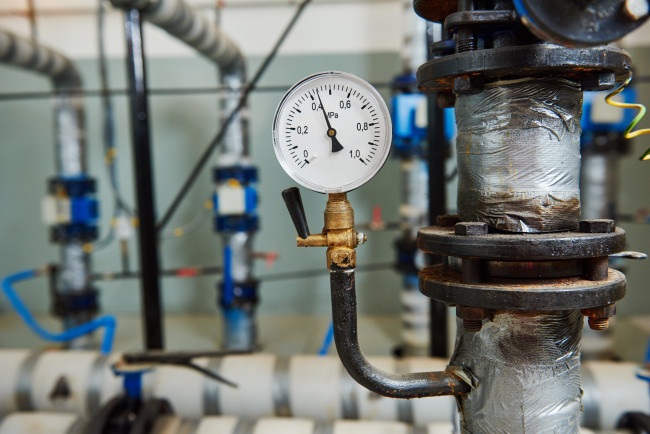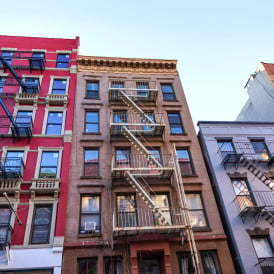Here's how you can get help paying for upgrades to protect your home from extreme weather
- Climate change is likely to have a disproportionate impact on low-income New Yorkers
- Low-income renters and owners can get aid from the weatherization assistance program
- The program pays for improvements such as insulation or a new heating system

Multifamily buildings can qualify for upgrades under the program as long as more than two-thirds of renters are low income.
iStock
The consequences of climate change—such as more frequent storms and worsening air quality—can overwhelm New York City’s outdated housing stock. That’s where government initiatives like the weatherization assistance program come in.
The program, funded by the U.S. Department of Energy (DOE), increases the energy efficiency of low-income renters and owners’ homes through a handful of upgrades. These improvements—such as insulating a building or replacing its heating system—also help make the property more resilient against climate change.
For example, sealing up a building can help it weather extreme temperatures—like sweltering heat and winter chills—and can improve indoor air quality on smoggy days, says Thelma Arceo, director of the weatherization assistance program at the Bedford Stuyvesant Restoration Corporation.
“We examine the air vents on the roof, ventilation, or the individual exhaust system if it's a small home, to determine whether they are working properly, in terms of how much airflow is needed within the building,” Arceo says. “Each individual apartment’s ventilation is also cleaned and inspected. So it's not just common areas, but the apartment itself is basically diagnosed for air quality.”
Upgrades are a crucial task for low-income New Yorkers, who face a disproportionate risk of climate change-related weather events that can damage property and often have less cash to make costly upgrades. The weatherization assistance program actually saves the average household actually $372 or more each year, according to the DOE.
Read on for how you can determine if you’re eligible for the weatherization assistance program, and what you can expect to gain from it.
[Editor’s note: This story is part of a new, ongoing series about how you can take into account climate change when purchasing a home. You can read our first stories, about considering a building’s and a neighborhood’s climate change risk. If climate change was a part of your home-buying process, send us an email here. We may contact you for future stories.]
Make sure you qualify
The weatherization assistance program is open to most buildings in New York City, as long as the tenants or owners meet the income thresholds, Arceo says.
Those that make at or below 200 percent of the federal poverty line are allowed to apply. In practice, that means that a family of two, for example, cannot have an annual income greater than $42,828 or a monthly income greater than $3,569. Income limits by the size of the household, and you can find a full list of the income eligibility limits here.
Multifamily buildings can qualify for upgrades under the program as long as more than two-thirds of renters are low income, according to New York University's Furman Center. Meanwhile, owners in small multifamily buildings must pay 25 percent of the cost of the improvements unless they are low income. In buildings with more than 50 units, owners are expected to cough up 35 percent of the total cost.
Households who receive supplemental security income—additional payments to the elderly or those with disabilities—or those who benefit from aid to families with dependent children—a child welfare program—are also eligible, according to the DOE.
What you can expect from upgrades
The program will fully or partially fund a handful of upgrades to your building and apartment. After an inspection, a provider can make changes such as replacing a property’s windows and insulating its roof and pipes, Arceo says. Upgrades, particularly to a building’s ventilation system, can help improve air quality as well.
The Bedford Stuyvesant Restoration Corporation can also upgrade a building’s heating system, install new energy efficient refrigerators, LED light bulbs, showerheads and smoke and carbon dioxide detectors as part of the program. And preventing hot and cold air from escaping a building makes a property more resilient in extreme heat and cold, as well as lower long-term operating costs, Arceo says.
“Because this is an energy efficiency conservation program, we deal with a lot of the energy operations mechanics in the building such as the boiler, the heating system, and we can also replace or electrify the heating systems or even the domestic hot water systems,” Arceo says. “That also contributes to enhancing climate change adaptations.”
Contact your local administrator to apply
In New York, the weatherization assistance program is administered by the State Division of Homes and Community Renewal, but a handful of local nonprofit organizations actually carry out the work.
In New York County—which covers just Manhattan—the state awarded more than $5 million to three nonprofits, Housing Conservation Coordinators, the Northern Manhattan Improvement Corporation and the Harlem Community Development Corporation. You can contact the Bedford Stuyvesant Restoration Corporation via their website, and you can find a full list of state providers on HCR’s website here.
Once you’ve identified the correct provider and determined your eligibility, you can contact your local nonprofit to apply, or talk to your landlord about applying if you are not an owner.
You Might Also Like






























